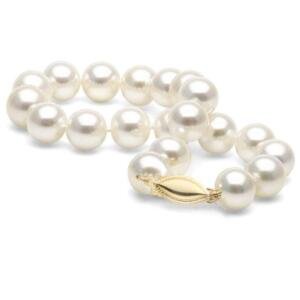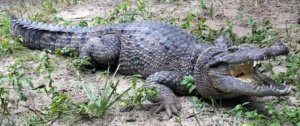Reading Passage 1 – The Pearl
You should spend about 20 minutes on Questions 1-13, which are based on Reading Passage 1 below.
A The pearl has always had a special status in the rich and powerful all through the history. For instance, women from ancient Rome went to bed with pearls on them, so that they could remind themselves how wealthy they were after waking up. Pearls used to have more commercial value than diamonds until jewellers learnt to cut gems. In the eastern countries like Persia, ground pearl powders could be used as a medicine to cure anything including heart diseases and epilepsy.
B Pearls can generally be divided into three categories: natural, cultured and imitation. When an irritant (such as a grain of sand) gets. inside a certain type of oyster, mussel, or clam, the mollusc will secrete a fluid as a means of defence to coat the irritant. Gradually, layers are accumulated around the irritant until a lustrous natural pearl is formed.
C A cultured pearl undergoes the same process. There is only one difference between cultured pearls and natural ones: in cultured pearls, the irritant is a head called ‘mother of pearl’ and is placed in the oyster through surgical implantation. This results in much larger cores in cultivated pearls than those in natural pearls. As long as there are enough layers of nacre (the secreted fluid covering the irritant) to create a gorgeous, gem-quality pearl; the size of the nucleus wouldn’t make a difference to beauty or durability.
D Pearls can come from both salt and freshwater sources. Typically, pearls from salt water usually have high quality, although several freshwater pearls are considered high in quality, too. In addition, freshwater pearls often have irregular shapes, with a puffed rice appearance. Nevertheless, it is the individual merits that determine the pearl’s value more than the sources of pearls. Saltwater pearl oysters are usually cultivated in protected lagoons or volcanic atolls, while most freshwater cultured pearls sold today come from China. There are a number of options for producing cultured pearls: use fresh water or sea water shells, transplant the graft into the mantle or into the gonad, add a spherical bead or do it nonbeaded.
E No matter which method is used to get pearls, the process usually takes several years. Mussels must reach a mature age, which may take up almost three years, and then be transplanted an irritant. When the irritant is put in place, it takes approximately another three years for a pearl to reach its full size. Sometimes, the irritant may be rejected. As a result, the pearl may be seriously deformed, or the oyster may directly die from such numerous complications as diseases. At the end of a 5- to 10-year circle, only half of the oysters may have made it through. Among the pearls that are actually produced in the end, only about 5% of them will be high-quality enough for the jewellery makers.
F Imitation pearls are of another different story. The Island of Mallorca in Spain is renowned for its imitation pearl industry. In most cases, a bead is dipped into a solution made from fish scales. But this coating is quite thin and often wears off. One way to distinguish the imitation pearls is to have a bite on it. Fake pearls glide through your teeth, while the layers of nacre on the real pearls feel gritty.
G Several factors are taken into account to evaluate a pearl: size, shape, Colour, the quality of surface and luster. Generally, the three types of pearls come in such order (with the value decreasing): natural pearls, cultured pearls and imitation pearls (which basically are worthless). For jewellers, one way to tell whether a pearl is natural or cultured is to send it to a gem lab and perform an X-ray on it. High-quality natural pearls are extremely rare. Japan’s Akoya pearls are one of the glossiest pearls out there, while the’ south sea water of Australia is a cradle to bigger pearls.
H Historically, the pearls with the highest quality around the globe are found in the Persian Gulf, particularly around Bahrain. These pearls have to be hand-harvested by divers with no advanced equipment. Unfortunately, when the large reserve of oil was discovered in the early 1930s, Persian Gulf’s natural pearl industry came to a sudden end because the contaminated water destroyed the once pristine pearls. In the present days, India probably has the largest stock of natural pearls. However, it is quite an irony that a large part of India’s slock of natural pearls are originally from Bahrain.
Reading Passage 2 – The Evolutionary Mystery: Crocodile Survives
You should spend about 20 minutes on Questions 14-26, which are based on Reading Passage 2 below.
A Even though crocodiles have existed for 200 million years, they’re anything but primitive. As crocodiles’ ancestors, crocodilia came to adapt to an aquatic lifestyle. When most of the other contemporary reptiles went extinct, crocodiles were able to make it because their bodies changed and they adapted better to the climate. They witnessed the rise and fall of the dinosaurs, which once ruled the planet, and even the 65 million years of alleged mammalian dominance didn’t wipe them off. Nowadays, the crocodiles and alligators are not that different from their prehistoric ancestors, which proves that they were (and still are) incredibly adaptive.
B The first crocodile-like ancestors came into existence approximately 230 million years ago, and they had many of the features which make crocodiles natural and perfect stealth hunters: streamlined body, long tail, protective armour and long jaws. They are born with four short, webbed legs, but this does not mean that their capacity to move on the ground should ever be underestimated. When they move, they are so fast that you won’t even have any chance to try making the same mistake again by getting too close, especially when they’re hunting.
C Like other reptiles, crocodiles are poikilothermal animals (commonly known as coldblooded, whose body temperature changes with that of the surroundings) and consequently, require exposure to sunlight regularly to raise body temperature. When it is too hot, they would rather stay in water or shade. Compared with mammals and birds, crocodiles have a slower metabolism, which makes them less vulnerable to food shortage. In the most extreme case, a crocodile can slow its metabolism down even further, to the point that it would survive without food for a whole year, enabling them to outlive mammals in relatively volatile environments.
D Crocodiles have a highly efficient way to catch prey. The prey rarely realises there might be a crocodile under the water because the crocodile makes a move without any noise or great vibration when spotting its prey. It only keeps its eyes above the water level. As soon as it feels close enough to the victim, it jerks out of the water with its wide open jaws. Crocodiles are successful because they are capable of switching feeding methods. It chases after fish and snatches birds at the water surface, hides in the waterside bushes in anticipation of a gazelle, and when the chance to ambush presents itself, the crocodile dashes forward, knocks the animal out with its powerful tail and then drags the prey into the water to drown.
E In many crocodilian habitats, the hot season brings drought that dries up their hunting grounds, leaving it harder for them to regulate body temperatures. This actually allowed reptiles to rule. For instance, many crocodiles can protect themselves by digging holes and covering themselves in mud, waiting for months without consuming any food or water until the rains finally return. They transform into a quiescent state called aestivation.
F The majority of crocodilia are thought to go into aestivation during the dry season. In a six-year study by Kennett and Christian, the King Crocodiles, a species of Australian freshwater crocodiles, spent nearly four months a year underground without access to water resources. Doubly labelled water was applied to detect field metabolic rates and water flux, and during some years, plasma fluid samples were taken once a month to keep track of the effects of aestivation regarding the accumulation of nitrogenous wastes and electrolyte concentrations.
G The study discovered that the crocodiles’ metabolic engines function slowly, creating waste and exhausting water and fat reserves. Waste is stored in the urine, becoming more and more concentrated. Nevertheless, the concentration of waste products in blood doesn’t fluctuate much, allowing the crocodiles to carry on their normal functions. Besides, even though the crocodiles lost water reserves and body weight when underground, the losses were proportional; upon emerging, the aestivating animals had no dehydration and displayed no other harmful effects such as a slowed-down growth rate. The two researchers reckon that this capacity of crocodiles to get themselves through the harsh times and the long starvation periods is sure to be the answer to the crocodilian line’s survival throughout history.
You need to be registered and logged in to take this quiz. Log in


